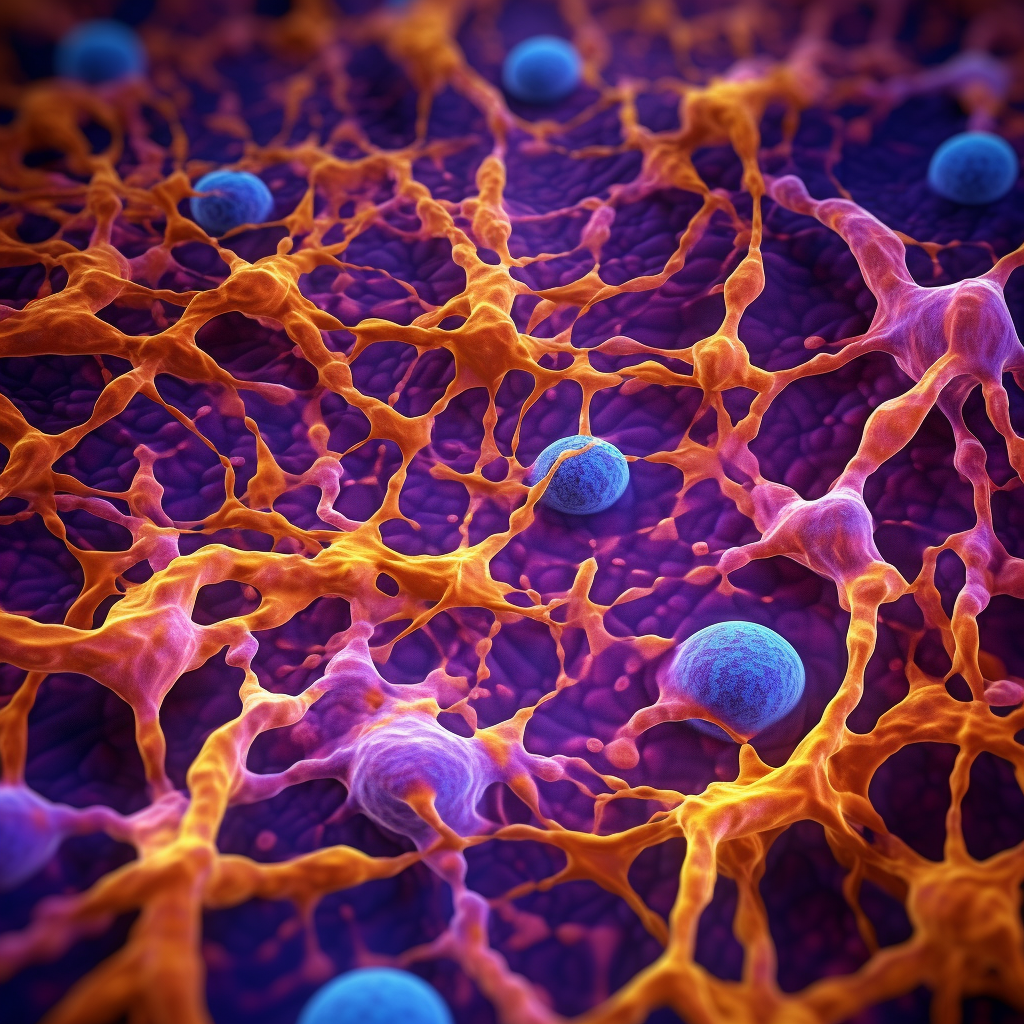Understanding Immunofluorescence: Shedding Light on a Vital Microscopy Technique
 12 months ago
By John Lewis Elopre
12 months ago
By John Lewis Elopre

Immunofluorescence has emerged as a crucial microscopy technique that plays a pivotal role in understanding the intricate world of cellular structures and functions. This innovative method allows scientists and researchers to visualize specific molecules within cells, enabling them to unravel mysteries that were once hidden from sight. In this comprehensive guide, we will delve deep into the realm of immunofluorescence, exploring its significance, procedure, applications, and advancements, all while shedding light on its immense contributions to scientific discovery.
Defining Immunofluorescence
Immunofluorescence is a powerful imaging technique that enables scientists to visualize specific molecules within cells or tissues. By using fluorescently labeled antibodies, researchers can target and illuminate proteins of interest, allowing them to study cellular structures and functions in unprecedented detail.
Evolution and Historical Significance
The roots of immunofluorescence trace back to the mid-20th century when the first fluorescent dyes were developed. Over the years, technological advancements have refined this technique, making it an indispensable tool in modern biology and medicine.
The Science Behind Immunofluorescence
Principles of Fluorescence
At the heart of immunofluorescence lies the phenomenon of fluorescence. When certain molecules, known as fluorophores, absorb light of a specific wavelength, they emit light at a longer wavelength. This emitted light, or fluorescence, is what allows scientists to detect and visualize the labeled molecules.
Antibodies: The Key Players
Antibodies are crucial components of immunofluorescence. These Y-shaped proteins can be engineered to bind specifically to the molecule of interest. By attaching a fluorescent tag to the antibody, researchers can effectively “paint” the target molecules, making them glow under the microscope.
The Immunofluorescence Procedure
Sample Preparation
Before diving into immunofluorescence, proper sample preparation is essential. Cells or tissues are fixed, permeabilized, and blocked to ensure antibody penetration and minimize nonspecific binding.
Primary and Secondary Antibodies
Primary antibodies are designed to recognize and bind to the target molecule. Secondary antibodies, on the other hand, are labeled with fluorophores and bind to the primary antibodies, amplifying the signal and enhancing detection.
Staining Techniques
Immunofluorescence offers various staining techniques, each serving specific purposes. Direct immunofluorescence involves a single primary antibody, while indirect immunofluorescence uses a primary antibody followed by a labeled secondary antibody.
Types of Immunofluorescence
Direct Immunofluorescence
In direct immunofluorescence, a single primary antibody binds directly to the target molecule. This method is straightforward but may lack the signal amplification of indirect immunofluorescence.
Indirect Immunofluorescence
Indirect immunofluorescence employs a two-step process, utilizing a primary antibody followed by a labeled secondary antibody. This approach offers increased sensitivity and signal strength.
Applications of Immunofluorescence
Cellular Localization
Immunofluorescence allows scientists to pinpoint the location of specific proteins within cells, helping unravel complex cellular processes.
Protein Expression Analysis
By visualizing protein expression levels, researchers can gain insights into how cells respond to various stimuli and conditions.
Disease Diagnosis
Immunofluorescence plays a critical role in medical diagnostics, enabling the identification of disease markers and abnormalities within tissues.
Immunofluorescence Advancements
Multicolor Labeling
Recent advancements in immunofluorescence techniques have enabled the simultaneous visualization of multiple proteins within a single sample.
Super-Resolution Immunofluorescence
Super-resolution techniques push the limits of conventional microscopy, allowing for the visualization of ultrafine cellular structures.
Challenges and Limitations
Background Noise
One challenge in immunofluorescence is background noise, which can hinder accurate signal detection. Careful experimental design and controls are crucial to mitigate this issue.
Photobleaching
Fluorophores can degrade over time due to photobleaching, resulting in reduced signal intensity. Proper fluorophore selection and imaging conditions can help prolong fluorescence.
Comparing Immunofluorescence with Other Techniques
Immunohistochemistry
While immunofluorescence uses fluorescent tags for visualization, immunohistochemistry employs enzyme-based reactions to produce visible signals.
Western Blotting
Immunofluorescence and Western blotting both provide valuable insights into protein expression, but they differ in sample type and detection methods.
Future Prospects and Innovations
Automated Immunofluorescence Systems
Automation is on the horizon, streamlining the immunofluorescence process and enabling high-throughput analysis.
AI Integration
Artificial intelligence is poised to revolutionize immunofluorescence analysis, enhancing data interpretation and accelerating scientific discovery.
Key Takeaways
In the realm of biological research, immunofluorescence stands as a beacon of illumination, guiding scientists to unlock the secrets of the microscopic world. Its versatility, specificity, and ever-evolving techniques make it an indispensable tool for unraveling the complexities of cells and tissues.
FAQs (Frequently Asked Questions)
What is immunofluorescence? Immunofluorescence is a microscopy technique used to visualize specific molecules within cells or tissues by utilizing fluorescently labeled antibodies.
How does immunofluorescence work? Immunofluorescence involves binding fluorescently tagged antibodies to target molecules, causing them to emit light and become visible under a microscope.
What are the applications of immunofluorescence? Immunofluorescence has diverse applications, including cellular localization, protein expression analysis, and disease diagnosis.
What challenges does immunofluorescence face? Immunofluorescence may encounter issues like background noise and photobleaching, which require careful consideration and optimization.
What does the future hold for immunofluorescence? The future of immunofluorescence includes automated systems and AI integration, enhancing efficiency and analysis capabilities.

Navigating the Complex World of Global Regulatory Affairs in Oncology
In today's fast-paced global pharmaceutical landscape, the regulatory affairs sector plays a pivotal role in ensuring the safety, efficacy, and market access of oncology drugs. As the demand for innovative cancer therapies continues to grow, understanding the intricacies of global...
11 months agoNavigating the Complex World of Global Regulatory Affairs in Oncology
In today's fast-paced global pharmaceutical landscape, the regulatory affairs sector plays a pivotal role in ensuring the safety, efficacy, and market access of oncology drugs. As the demand for innovative cancer therapies continues to grow, understanding the intricacies of global...
11 months ago
The Vital Role of Institutional Review Boards (IRBs) in Oncology Research
In the world of medical research, ethics play a paramount role. Researchers, especially in fields like oncology, are constantly striving to find innovative solutions and treatments to combat cancer. However, these advancements must be achieved within the boundaries of ethical...
11 months agoThe Vital Role of Institutional Review Boards (IRBs) in Oncology Research
In the world of medical research, ethics play a paramount role. Researchers, especially in fields like oncology, are constantly striving to find innovative solutions and treatments to combat cancer. However, these advancements must be achieved within the boundaries of ethical...
11 months ago
Data Privacy and Security in Oncology Trials
In today's digital age, data privacy and security have become paramount concerns across various industries, including healthcare. Within the realm of clinical research, particularly in oncology trials, safeguarding patient data is of utmost importance. This article delves into the critical...
11 months agoData Privacy and Security in Oncology Trials
In today's digital age, data privacy and security have become paramount concerns across various industries, including healthcare. Within the realm of clinical research, particularly in oncology trials, safeguarding patient data is of utmost importance. This article delves into the critical...
11 months ago